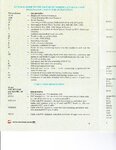munzir
Full Member level 6
How many amps a single core wire of 1mm can pass through in open air or i.e. open not concealed ?
And would the withstanding amps (amps that will flow through the wire) increase or decrease by increasing the cores ?
which one cable can pass through max. amps ?
1) 1 mm single core
2) 1 mm 2 core
3) 1 mm 3 core
4) 1 mm 3.5 core
4) 1 mm 4 core
Thanks
And would the withstanding amps (amps that will flow through the wire) increase or decrease by increasing the cores ?
which one cable can pass through max. amps ?
1) 1 mm single core
2) 1 mm 2 core
3) 1 mm 3 core
4) 1 mm 3.5 core
4) 1 mm 4 core
Thanks



